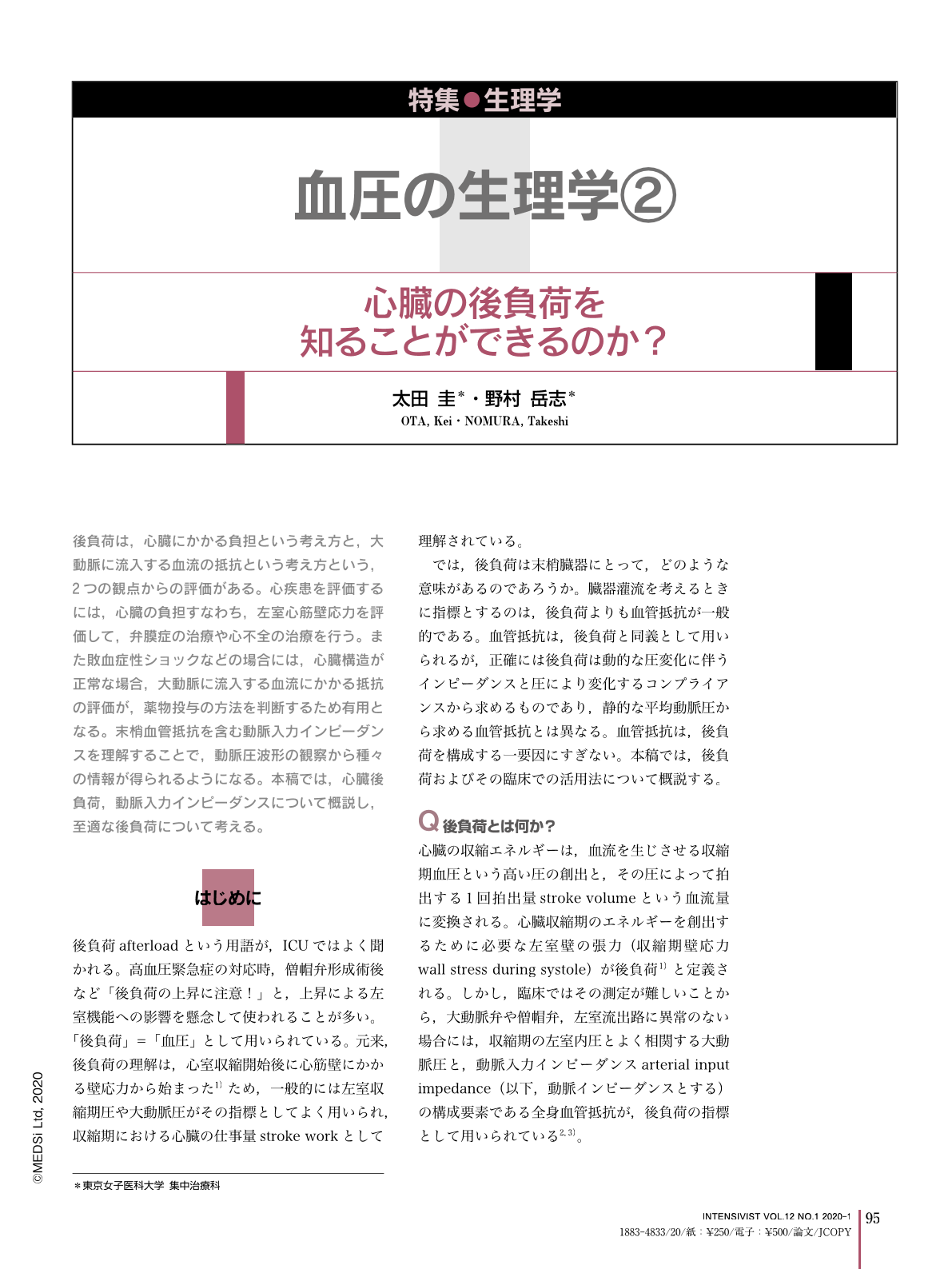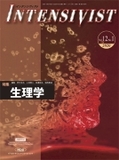Japanese
English
- 有料閲覧
- Abstract 文献概要
- 1ページ目 Look Inside
- 参考文献 Reference
後負荷は,心臓にかかる負担という考え方と,大動脈に流入する血流の抵抗という考え方という,2つの観点からの評価がある。心疾患を評価するには,心臓の負担すなわち,左室心筋壁応力を評価して,弁膜症の治療や心不全の治療を行う。また敗血症性ショックなどの場合には,心臓構造が正常な場合,大動脈に流入する血流にかかる抵抗の評価が,薬物投与の方法を判断するため有用となる。末梢血管抵抗を含む動脈入力インピーダンスを理解することで,動脈圧波形の観察から種々の情報が得られるようになる。本稿では,心臓後負荷,動脈入力インピーダンスについて概説し,至適な後負荷について考える。
The concept of “afterload” is evaluated from two viewpoints:stress to ventricular systolic stroke work and resistance to blood flow into the aorta. To evaluate heart disease, left ventricle myocardial wall stress is evaluated, and valvular disease or heart failure is treated. In patients in septic shock with an intact normal heart structure, the evaluation of resistance to blood flow into the aorta is useful for determining medical treatment strategies. Understanding the aortic input impedance including peripheral vascular resistance provides various information from examination of the arterial waveform. This section outlines cardiac afterload and aortic input impedance and discusses optimal afterload.

Copyright © 2020, MEDICAL SCIENCES INTERNATIONAL, LTD. All rights reserved.


